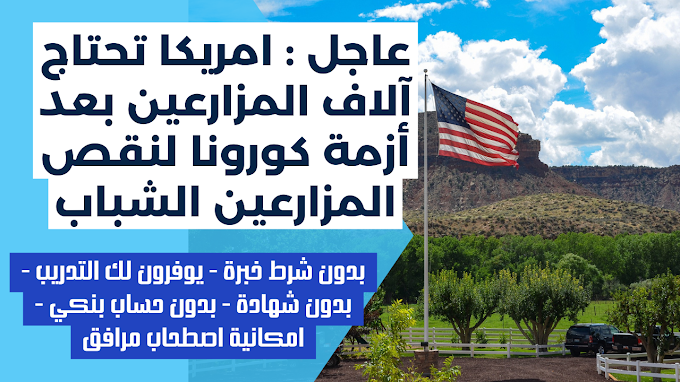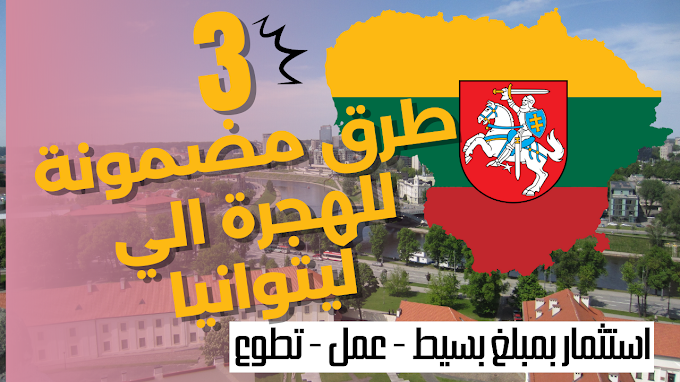1-1- CAPE TOWN
Cape Town at a Glance: Cape
Town lies on a small peninsula at the southern
tip of Africa which juts into the Atlantic
Ocean. It is South Africa’s premier tourist destination and its fourth largest
urban centre. Enriched by Dutch, British and
Cape Malay influences, the cosmopolitan
atmosphere is a unique blend of cultures. Lying at the foot of its most famous
landmark, Table Mountain, Cape Town has a
host of well-preserved historical
buildings. Many, such as the Old Town House on Greenmarket Square, now house
museums. Outside the city, attractions include
Chapman’s Peak Drive along a winding
coastline, where sheer cliffs drop to the swirling sea below, and a tour of the
vineyards around Franschhoek and Stellenbosch.
2 2- Robben Island
Named “Robben Eiland” – seal island – by
the Dutch in the mid-17th century, Robben Island has seen much human suffering.
As early as 1636 it served as a penal settlement, and it was taken over by the
South African Prisons Service in 1960. Its most famous inmate was Nelson
Mandela, who spent 18 years here. When the last political prisoners were
released in 1991, the South African Natural Heritage
Programme nominated the island for its
significance as a seabird breeding colony – it hosts more than 130 bird
species. In 1997 the island was designated a museum,
and in 1999 it was declared a UNESCO World
Heritage Site. Governor’s House This splendid Victorian building dates
from 1895 and was originally
the home of the Island
Commissioner. Today it
serves as a conference
centre and provides
upmarket accommodation for visiting dignitaries
and VIPs.
3- Touring the Cape Peninsula
Tours of the Cape Peninsula should start
on the Atlantic coast and include Chapman’s Peak Drive, a scenic route that
took seven years to build. The drive, cut into the cliff face, has splendid
lookout points with picnic sites. A highlight of the tour is the panorama at
Cape Point, where the peninsula juts into the sea. The views encompass False
Bay, the Hottentots Holland mountains and Cape Hangklip, 80 km (50 miles) away.
The return journey passes the penguin colony at Boulders and goes through
charming Simon’s Town. Chapman’s
Peak 1 The highest
point rises to 592 m (1,942 ft). An observation platform is set on sheer cliffs
which
drop 160 m (525 ft) to the swirling seas
below.
4- Kirstenbosch National Botanical Garden
In July 1913, the South African government
handed over the running of Kirstenbosch estate (which had been bequeathed to
the state by Cecil John Rhodes in 1902) to a board of trustees. The board established
a botanical garden that preserves and
propagates rare indigenous plant species.
Today, the world-renowned garden covers an area of 5.3 sq km (2 sq miles), of
which 7 per cent is cultivated and
90 per cent is covered by natural fynbos and forest. Kirstenbosch is
spectacular from August to October when the garden is ablaze with spring
daisies and gazanias.
Colonel
Bird’s Bath Tree
ferns and Cape Holly trees surround
this pool, named after
Colonel
Bird, deputy colonial
secretary
in the early 1800s. Van Riebeeck’s Wild Almond Hedge In
the 1660s a hedge was planted to
keep the Khoi out of the settlement and
discourage illegal trading.
5- THE WESTERN & SOUTHERN CAPE
Introducing the Western and Southern Cape This
region is dominated by a rugged mountain chain, comprising
what is geologically known as the Cape folded mountains. The
landscapes found in this territory are diverse. The arid and
rather barren West Coast gives way to fertile winelands,
cradled by jagged mountains. Beyond the terraced valleys,
dramatic passes that traverse the massive mountain ranges
of the Southern Cape are a testament to the efforts of
early road builders. The spectacular Cango Caves lie
here and, on the other side of the mountains, the
magnificent Garden Route. All along the
rocky coastline, which is one of the most dangerous in the world and where
swells can reach up to 30 m (98 ft) in height, fishermen reap the harvest of
the sea. Some 37 whale and dolphin species
and around 100 different types of shark occur
in southern African waters. Only a
small number come in close to the coast, however.
Of the dolphins, bottlenose,
common and Heaviside’s are the most prolific,
while common predatory sharks
include the great white, tiger,
ragged-tooth, oceanic white tip, bull (Zambezi), and mako. A large portion of the
world’s 4,000–6,000 southern right whales migrates
north annually, with numbers increasing by
seven per cent every year. They leave their subantarctic feeding grounds from
June onwards to mate and calve in the
warmer waters of the protected rocky bays
and inlets that occur along the South African coastline.
6- Boschendal Manor House
In 1685, Simon van der Stel granted the land
on which the manor house stands to the French Huguenot Jean le Long. Originally
named “Bossendaal” (which literally means “forest and valley”), the property
was transferred in 1715, together with adjacent fertile farmland, to another Huguenot
settler, Abraham de Villiers. It remained in the wine-farming de Villiers
family for 100 years. Jan de Villiers built the wine cellar and coach house in
1796. His youngest son, Paul, was responsible for Boschendal Manor House in its
present H-shaped form, which he built in 1812. Today, this historic estate
belongs to DGB, a consortium of local
business people who bought Boschendal from Anglo-American in 2003. Crafted
Room Dividers Screens
divided the front and
back rooms in elegant Cape Dutch
homes. Boschendal’s original teak-and yellowwood screen is decorated with geometric
designs in dark ebony. Master Bedroom This antique stinkwood four-poster bed
was crafted in 1810 by local
artisans. It is decorated with a hand-crocheted lace hanging and a light,
embroidered cotton bedspread, both of which date from around 1820.
7- Franschhoek’s French Heritage
Franschhoek is a charming little country
town with a distinctly French character. Wine-making traditions introduced by
the early French Huguenot settlers are still
pursued by viticulturists with surnames
like Malherbe, Joubert and du Toit. Restaurants called Le Quartier Français and
La Petite Ferme offer Provençale cuisine in light-filled, airy interiors, while
Chez Michel flies the French flag and
serves delicacies like escargots, and
Camembert marinated in Calvados brandy. Architecturally, the influence of
French Classicism is evident in the graceful lines
of the historic buildings. A good
example is the Huguenot Memorial Museum, which was based on a design by the
18th-century French architect Louis Michel Thibault. Freedom of religion is
symbolized by the dramatic central figure at
the Huguenot Monument, which depicts a
woman holding a bible in her right hand and a broken chain in the left. Refined
classic gables like that of the Huguenot Memorial Museum replaced the
Baroque exuberance of earlier gables. THE FRENCH HUGUENOTS After King
Louis XIV of France revoked the Edict of Nantes in 1685, countless French
Huguenots were forced to flee to Protestant countries. The Dutch East India
Company’s offer of a new life at the Cape of Good Hope was eagerly accepted by
some 270 individuals.
8- Worcester Museum
The recreated buildings of this living
“little farm” museum (previously known as Kleinplasie Open-Air Museum), which opened
in 1981, portray the lifestyle of the early Cape pioneer farmer. Each one
houses a particular home indus try
activity that was practised between
1690 and 1900. Here, visitors can watch
brown bread being baked in an outdoor oven
and the mak ing of tallow candles and soap. At times the museum hosts seasonal
activities such as wheat threshing and winnowing, grape treading and the
distilling of witblits (a potent home-made brandy). Shepherd’s Hut
Shepherds who
tended distant flocks lived in temporary shelters like this
one. In the
treeless Karoo, domed stone roofs were used instead of
wooden beams and
trusses. The Horse-Mill Back in 1850, most farmers
relied on horse-drawn mills to grind flour, a slow, laborious process. Canisters
This collection of 19thcentury storage tins is displayed in the museum
restaurant.
Occasionally, these tins are found in “junk”
stores today. The
Blacksmith The smithy door, aswell as the bellows
used by the
blacksmith, date from 1820. The rest of the
building has
walls cast in clay and gables built from
raw brick. The blacksmith
can be seen daily, forging nails, hinges, forks
and tripods.
9- THE WESTERN COASTAL TERRACE
The dry, sunbaked landscape of South
Africa’s western coastal terrace is bounded to the east by the rugged Cedarberg
mountain range and to the west by the rocky, wind-blown Atlantic coastline. An
unexpected surprise in this forbidding terrain is the appearance every spring
of colourful fields of exquisite wildflowers
in Namaqualand, the West Coast’s most
famous tourist attraction. The West Coast extends north of Cape Town to the
Namibian border, where the fringes
of the Namib desert epitomize the
extremes of this vast, rain-deprived area. The
arid, bleak and infertile vegetation zones
support only hardy, drought-resistant succulents and geophytes (plants whose
bulbs, corms or tubers store water and nutrients). The fynbos area south of
Nieuwoudtville possesses a stark beauty, embodied in the weird forms of the Cedarberg’s
outcrops that were eroded
over millennia by wind and rain. Further
inland the country’s wheatbelt centres on Malmesbury, and is an area of
undulating golden corn whose texture changes constantly with the play of light
on the rippling fields. The upwelling of the Atlantic Ocean’s cold Benguela
Current along the coast brings rich phytoplanktonic nutrients to the surface,
attracting vast shoals of pelagic fish
(especially anchovies). This harvest
from the sea supports an important fishing
industry in the Western Cape. Saldanha
Bay, a rather unappealing industrial town, is the fishing and seafood
processing hub. It is also a major centre for the export
of iron ore, which is mined at Sishen,
further inland in the Northern Cape Province. Sishen is the site of the largest
iron ore deposits in the world. The Namaqualand is an arid belt stretching
north of the Cedarberg almost to the Namibian border, which is marked by the
mighty Orange River. This belt only receives about 140 mm (6 inches) of
rainfall during March and April, but the brief downpours provide sufficient
moisture to clothe the landscape with colourful blooms from August to October
every year.
10- West Coast National Park
The West Coast National Park
encompasses Langebaan Lagoon, the islands Schaapen, Jutten, Marcus and Malgas,
and the Postberg Nature Reserve, which is opened to the public each spring
(Aug–Sep) when it is carpeted with colourful
wildflowers like daisies and gazanias.
The park is one of South Africa’s most important wetlands, harbouring some
250,000 waterbirds including plovers, herons, ibis, and black oystercatchers. Antelope
species such as elands, kudus and zebras can also be seen. Accommodation in the
park consists of chalets and houseboats on the lagoon. WATERSPORTS AT
LANGEBAAN Ideal conditions have attracted the attention of international
organizations: the 1995 Windsurfing World Cup was held at Langebaan Lagoon, and
in 1998 it was nominated
to host the prestigious
Production-Board World Championships. In order to protect the natural
environment without curtailing the activities of other interest groups, the
lagoon has been zoned into three recreational areas, with the northern tip
demarcated for all watersports enthusiasts and the central part of the lagoon
out of bounds for motorboats.

































0 Comments